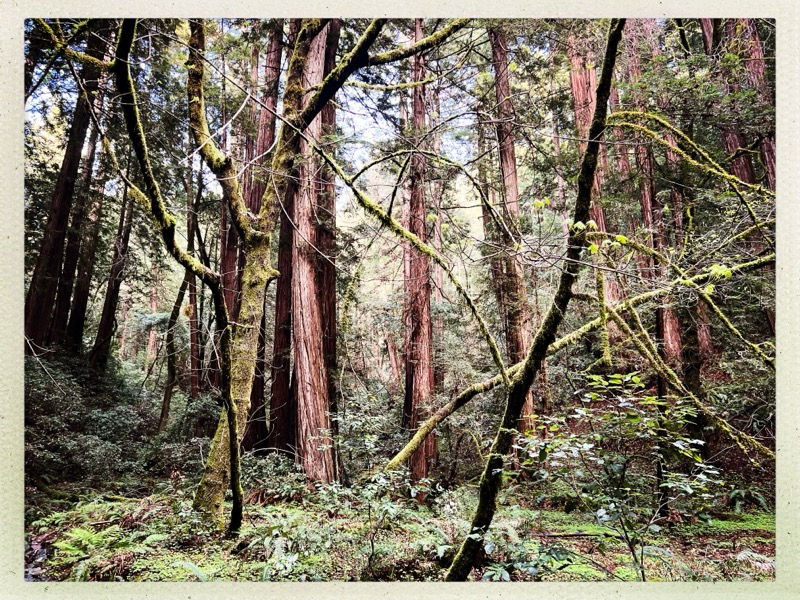Non-Sequitur Trees
- Maria Finn
- Mar 19, 2024
- 3 min read

Photo by Jaye Johnson
“I want to think about trees. Trees have a curious relationship to the subject of the present moment. There are many created things in the universe that outlive us, that outlive the sun, even, but I can’t think about them. I live with trees.” Annie Dillard, Pilgram at Tinker Creek
Spring is tree season. Okay, flowers too. But plum, magnolia and tulip trees are in full flower, contrasting against the bare branches of the trees that are still dormant. Moss on oaks is thick and lush from the rain, and mint green lichen bedazzle them. The pollen is getting carried on the breeze, creating a fertile frenzy of cross pollination, and much sneezing for those with allergies. I love watching the non-sequitur trees. The peach tree growing along a fence and hanging over the water in Sausalito, where you must paddle to the get the fruit by boat. The flowering pear tree, a lasting remnant of a homesteader ranch that’s now in the Golden Gate National Recreation Area.
In the late 1800’s, to transform the dunes and create Golden Gate Park, over 66,000 trees including sequoias, acacia, eucalyptus, Monterey pines and Monterey Cypress were planted. Trees planted in groups - particularly of the same species work as an organism. They can generate their own heat and cold, generate water and humidity. When one gets sick, the others nurse it back to life by sending it water and nutrients. The stronger each individual, the healthier the group.Currently there’s 680 forested acres in Golden Gate Park. Virtually none of them native.
I was up in Hopland last weekend, and while walking across a field and admiring the black oak trees when my friend Emile asked me if I’ve ever noticed a tree that seemed out of place. A species from somewhere else, standing alone. He said that when settlers were passing through and someone died, they planted one of the trees they were carrying with them on the burial spot.
Not a memorial with a name engraved in stone. But the body would decompose and fertilize the tree roots and flowers and fruit and seeds or pollen and pinecones would all become part of the tapestry of the place, the evolution of this speck of time and space on planet earth. Perhaps this tree would become part of the bigger forest organism.
And what if we planted a tree for every person who died, or even when a dream died? For that disappointment, could I grow a redbud? And there, a birch? A weeping willow for a broken heart? A Mission fig for so much appetite, and an oak tree with roots inoculated with truffle spores, growing into all our unfulfilled desires? Could our dreams fertilize a redwood?
One that can grow for thousands of years, until she’s got at least five different ecosystems on her. Ones of these is a dell of leather leaf ferns and their warp and weft of mats that create their own havens for salamanders that never once touch the ground. Another is a canopy where grey foxes hunt squirrels amongst the clouds and birds see them as islands, refuge for food and rest, on their long journeys. And between the worlds are branches where western monarchs stop to rest on their migration. To drink from the fog dripping from their needles.
Then our dead dreams would grow and flower and sprout mushrooms and fungi and fruit and feed birds and boars and fatten up the flying squirrels, and seeds and pollen would spread and more where silkworms and moths and butterflies could nest.
They’d spread out into the world with the message, “It was always enough.”



Comments